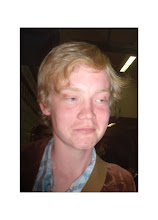 OK, so it's been over a year since I've posted anything.....
OK, so it's been over a year since I've posted anything.....Berlin, Jan 9th - 17th, 2011
As you walk past the giant monolithic SONY building and Fritz Lang's 'Metropolis'-style buildings (The Ritz) on the right, it is hard to imagine the barbed wire, land mines, tanks and scattering of military soldiers that would have previously marked the 'no-mans' land of the wall which once divided the city. And yet this is where on the year of my birth it collapsed as the first blows to the wall symbolised the dawning of what appeared to be a new era. Where you can now get your passport stamped with old GDR visa stamps for just €2. Berlin oozes with history, from the remnants of the Berlin Wall, Check Point Charlie (the old American Check point during the wall now surrounded by souvenir shops and a McDonalds), to the towering Imperialistic Brandenburg Gate and Unter Den Linden with some of Schinkel's grand architecture proudly adorning the Gendenmarkt.
I have never been to Germany before and although I studied modern American history at A-level (and therefore know a little of the cold war) I know little of German history, even of the World Wars from a German point of view. I have always wondered what it must be like to grow up and learn of the terrible truths which happened on one's doorstep. What is sad is the amount of exciting and interesting modern Art that was happening before the Nazi party came into power and forced many artists who were known to be outputting so-called 'degenerate art' out of the country. The Bauhaus movement for one was based in Berlin from the 1920s until they were kicked out by the Nazi regime. Influenced by Hungarians such Laslo Moholey-Nagy and leftist orientated pacifistic avant-garde ideas gathered around Lajos Kassak, editor of the journal MA (today). When Hungary gained independence in 1918, artist with revolutionary sympathies were forced to leave the country. Ironically, twenty years on they would be forced to move out of Germany. The building where the Bauhaus movement used to occupy is now used as an archive and was exhibiting Hungarian art from its earliest movement with many influences including De Stilj with its proclomation 'that which is random or accidental is to be replaced by what is regular and consistent' and influenced the style of architecture that Bauhaus would become most famous for.
Another great movement of German art was the Brücke movement which was a group of German expressionist formed in Dresden in 1905 and named after the Brücke museum in Berlin which is located on the outskirts of Grundewald forest on the western outskirts of Berlin. The movement was all about getting back to nature and had a keen interest, like the Fauves, to primivalist art. A beautifully apt location with a dusting of snow still clinging to the forest land, there was a retrospective on Erich Heckel (1883-1970), clearly showing a distinct 3 stages of his career through early expressionism moving on to 'neue sachlichkeit' - 'the new sobriety' (or new objectivity, it sought to distance itself from the turbulent post war years and pathos of expressionism. Franz Roh described the art as 'miniturist, cool to cold.')
From October 1953 until his death Bertolt Brecht lived in a rented apartment on the first floor of Chausseestrasse 124, East Berlin where he lived with Helene Weigel (although they were pretty much estranged in this time - Weigel lived in the second floor, Brecht in the first and the shared the ground floor kitchen). The first floor is now an open museum and nothing has been touched since Brecht's death. It's fascinating to look through and see how Brecht worked and it's a beautiful house in lovely part of East Berlin.
Inspired by this trip to Berlin, I picked up two books. Firstly, John Le Carrie's The spy who came in from the cold about espionage in Cold War Berlin. A story about the harsh realities of espionage during the height of cold war and about second guessing each over, a story of intrigue, back-stabbing and of raw emotion. A great read; has inspired me to take a look at Le Carrie's over works.
Secondly, Philip Kerr's The one from the other which is set in Hamburg in 1949 and follows a private detective in post war Germany looking for missing persons but before he knows it he is tangled up in a web of ex-Nazis and bent priests. This is what the terms 'thriller' and 'page turner' were made for!
Both books are very similar in their bleakness and self deprecation. I think this is part of allure of Berlin, the beauty in its bleakness with constant reminders of a torrid past round every corner yet signs of a hopeful, progressive future in the same light which mirrors the mismatch of cultures and architectures which dot the city. The cliches roll off the tongue yet they seem to make sense.
